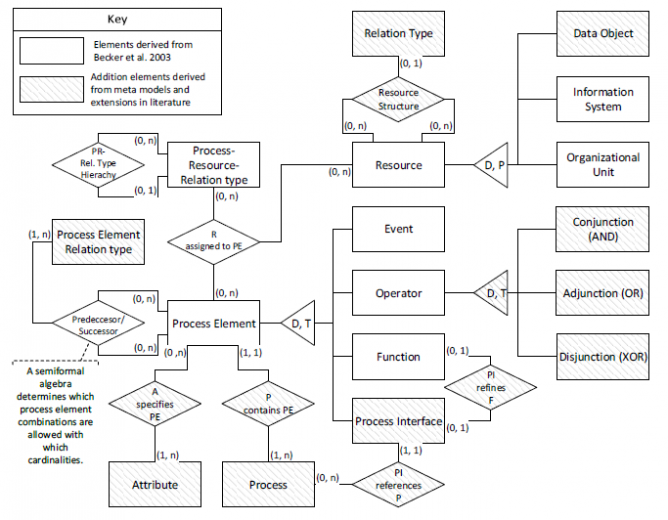Meta Model
From EPC Standard
The EPC meta model is a core component of the EPC standard. In essence, the meta model consists of
Short Description
A coherent meta model is a pillar for the specification of process modelling languages. Accordingly, this work builds the basis for further standardization by providing an integrated meta model for the EPC. The resulting meta model therefore supports the invigoration of the EPC by impelling the future standardization effort.
Graphical Solution
Consolidated EPC meta model
The model is created via the Enhanced Entity-Relationship Diagram notation, which uses minimum and maximum cardinalities as specified by constraints for specializations, which can be disjoint (D) or non-disjoint (N) and incomplete / partial (P) or total (T).
In the chosen EPC baseline meta model process elements are used as an abstract representation of either functions, events or operators. Process elements are related to each other, which reflects the control flow throughout the process. Resources represent a
generalization of different resource types. For each resource, its relationship to a process element is specified. Additionally, the model allows for relationship type hierarchy. The ternary relation between resource, process element and process-resourcerelationship type assigns the resource to the process element using the determined relationship type.
References
- [*1]Jannaber, S., Karhof, A., Riehle, D. M., Thomas, O., Delfmann, P., & Becker, J. (2016). Invigorating Event-driven Process Chains-Towards an integrated meta model for EPC standardization. In Modellierung (Workshops) (pp. 13-22).
